
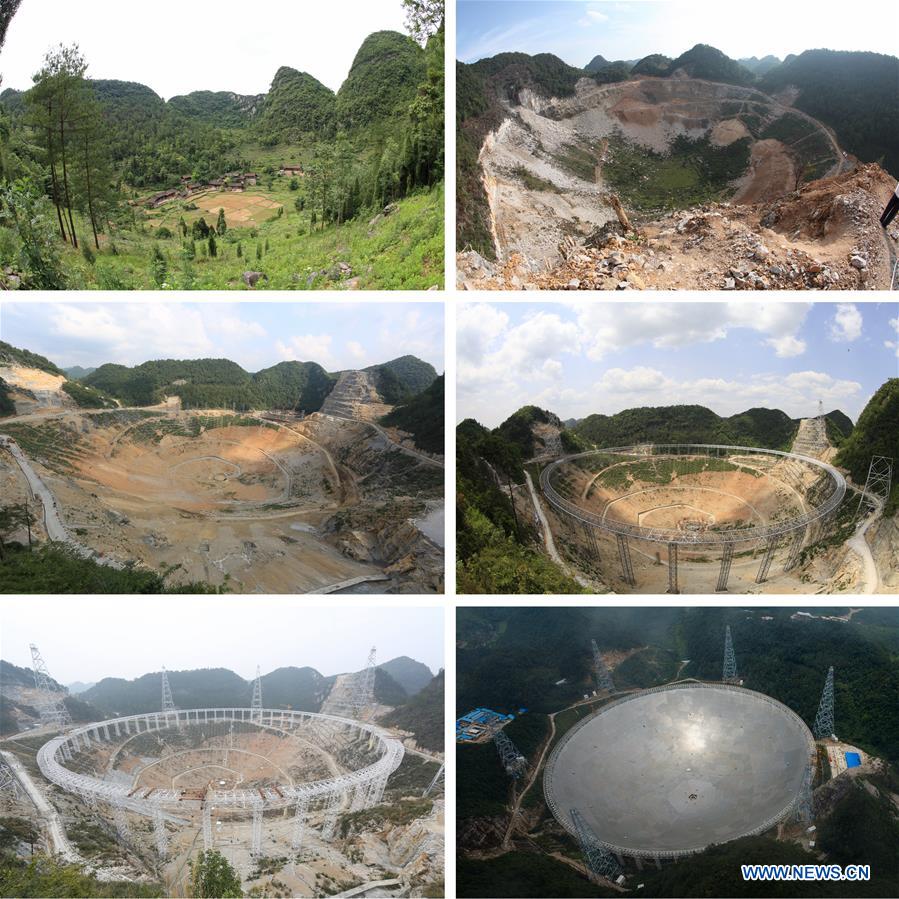
Combined photo shows pictures of the construction site of the Five-hundred-meter Aperture Spherical Telescope (FAST) at a karst valley in Pingtang County of southwest China's Guizhou Province taken respectively on May 25, 2009 (L, up), Sept. 6, 2011 (R, up), Aug. 5, 2012 (L, Center), May 2, 2014 (R, Center), Jan. 16, 2015 (L, down) and July 3, 2016. (The first five pictures are provided by the National Astronomical Observatories of Chinese Academy of Sciences and the last is taken by Xinhua photojournalist Ou Dongqu). Installation was completed on the world's largest radio telescope on Sunday morning as the last of 4,450 panels was fitted into the center of the big dish. Scientists will then begin debugging and trial observation of the FAST. The project has the potential to search for more strange objects to better understand the origin of the universe and boost the global hunt for extraterrestrial life. (Xinhua)

Combined photo shows pictures of sky taken from the feedback source cabin of the Five-hundred-meter Aperture Spherical Telescope (FAST) at a karst valley in Pingtang County of southwest China's Guizhou Province on Aug. 21, 2014 (above) and on June 28, 2016. Installation was completed on the world's largest radio telescope on Sunday morning as the last of 4,450 panels was fitted into the center of the big dish. Scientists will then begin debugging and trial observation of the FAST. The project has the potential to search for more strange objects to better understand the origin of the universe and boost the global hunt for extraterrestrial life. (Xinhua/Ou Dongqu)
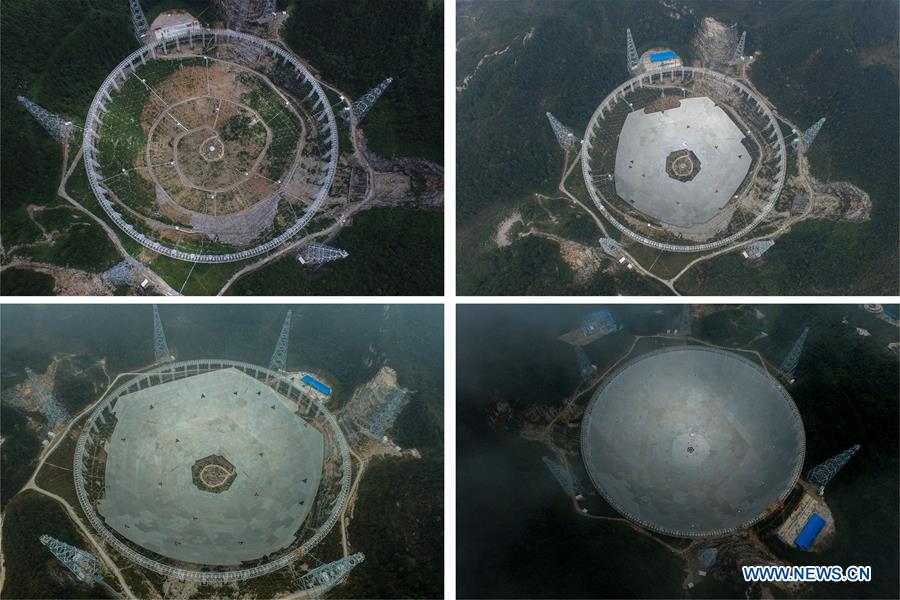
Combined photo shows pictures presenting the process of installation of panels on the Five-hundred-meter Aperture Spherical Telescope (FAST) at a karst valley in Pingtang County of southwest China's Guizhou Province taken respectively on Aug. 2, 2015 (L, up), on Dec. 16, 2015 (R, up), on March 9, 2016 (L, down) and on July 3, 2016. Installation was completed on the world's largest radio telescope on Sunday morning as the last of 4,450 panels was fitted into the center of the big dish. Scientists will then begin debugging and trial observation of the FAST. The project has the potential to search for more strange objects to better understand the origin of the universe and boost the global hunt for extraterrestrial life. (Xinhua/Ou Dongqu)
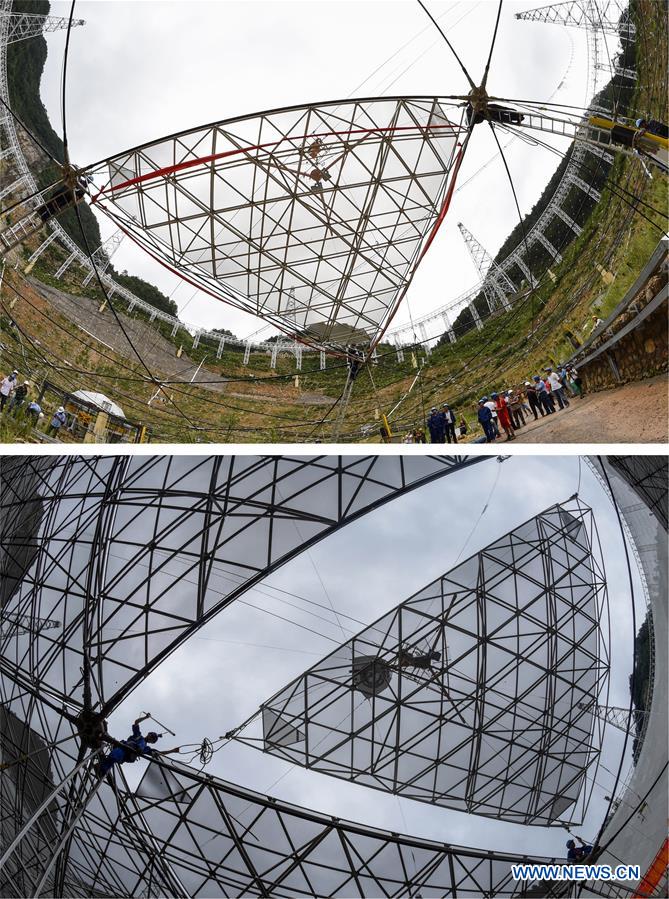
Combined photo shows picture presenting the first panel to the reflector of the Five-hundred-meter Aperture Spherical Telescope (FAST) being installed at a karst valley in Pingtang County of southwest China's Guizhou Province on Aug. 2, 2015 (up) and picture showing nearly-done project of the FAST taken on July 2, 2016. Installation was completed on the world's largest radio telescope on Sunday morning as the last of 4,450 panels was fitted into the center of the big dish. Scientists will then begin debugging and trial observation of the FAST. The project has the potential to search for more strange objects to better understand the origin of the universe and boost the global hunt for extraterrestrial life. (Xinhua/Ou Dongqu)

Combined photo shows picture of the first panel to the reflector being installed on the Five-hundred-meter Aperture Spherical Telescope (FAST) at a karst valley in Pingtang County of southwest China's Guizhou Province on Aug. 2, 2015 (up) and picture of nearly-done project of the FAST taken on July 2, 2016. Installation was completed on the world's largest radio telescope on Sunday morning as the last of 4,450 panels was fitted into the center of the big dish. Scientists will then begin debugging and trial observation of the FAST. The project has the potential to search for more strange objects to better understand the origin of the universe and boost the global hunt for extraterrestrial life. (Xinhua/Ou Dongqu)
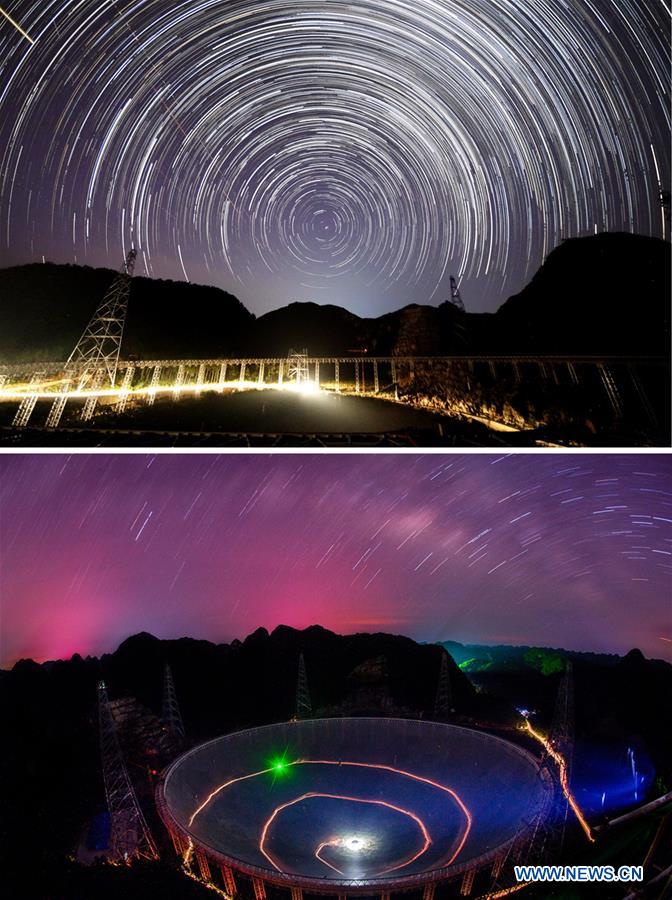
Combined photo shows picture of night view of the Five-hundred-meter Aperture Spherical Telescope (FAST) at a karst valley in Pingtang County of southwest China's Guizhou Province taken on Sept. 1, 2014 (up) (Photo provided by the National Astronomical Observatories of Chinese Academy of Sciences) and picture of the nearly-done project of FAST taken on June 27, 2016 (Photo by Xinhua photojournalist Ou Dongqu). Installation was completed on the world's largest radio telescope on Sunday morning as the last of 4,450 panels was fitted into the center of the big dish. Scientists will then begin debugging and trial observation of the FAST. The project has the potential to search for more strange objects to better understand the origin of the universe and boost the global hunt for extraterrestrial life. (Xinhua)
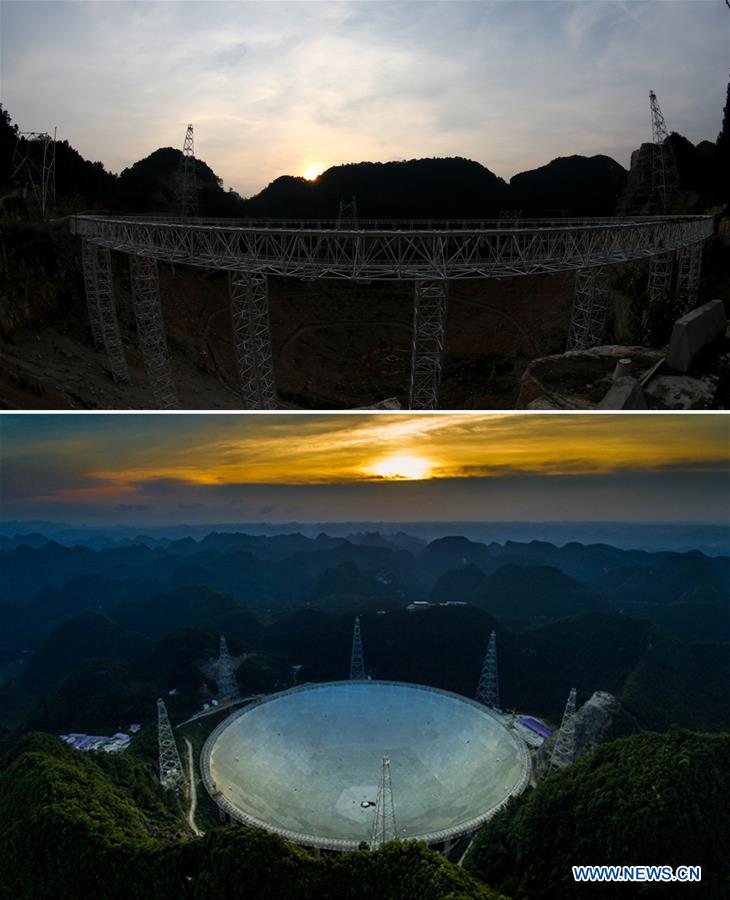
Combined photo shows picture of the sunset view of the Five-hundred-meter Aperture Spherical Telescope (FAST) at a karst valley in Pingtang County of southwest China's Guizhou Province taken on July 24, 2014 (up) (Photo provided by the National Astronomical Observatories of Chinese Academy of Sciences) and picture of the nearly-done project of FAST taken on June 27, 2016 (Photo by Xinhua photojournalist Ou Dongqu). Installation was completed on the world's largest radio telescope on Sunday morning as the last of 4,450 panels was fitted into the center of the big dish. Scientists will then begin debugging and trial observation of the FAST. The project has the potential to search for more strange objects to better understand the origin of the universe and boost the global hunt for extraterrestrial life. (Xinhua)
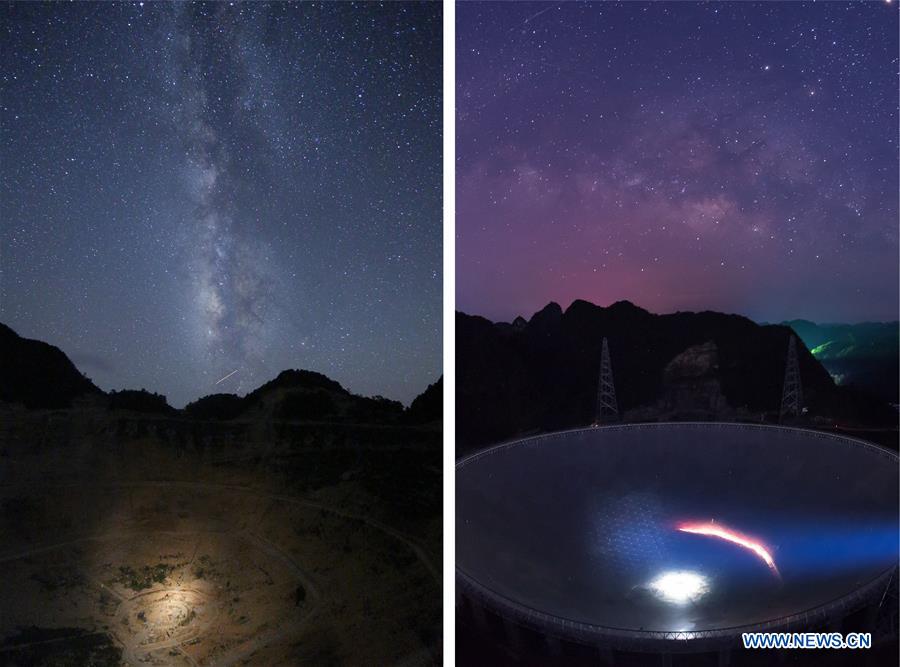
Combined photo shows picture of the night view of the Five-hundred-meter Aperture Spherical Telescope (FAST) at a karst valley in Pingtang County of southwest China's Guizhou Province taken on Aug. 28, 2013 (L) (Photo provided by the National Astronomical Observatories of Chinese Academy of Sciences) and picture of the nearly-done project of FAST taken on June 27, 2016 (Photo by Xinhua photojournalist Liu Xu). Installation was completed on the world's largest radio telescope on Sunday morning as the last of 4,450 panels was fitted into the center of the big dish. Scientists will then begin debugging and trial observation of the FAST. The project has the potential to search for more strange objects to better understand the origin of the universe and boost the global hunt for extraterrestrial life. (Xinhua)

86-10-68597521 (day)
86-10-68597289 (night)

86-10-68511095 (day)
86-10-68512458 (night)

cas_en@cas.cn

52 Sanlihe Rd., Xicheng District,
Beijing, China (100864)

